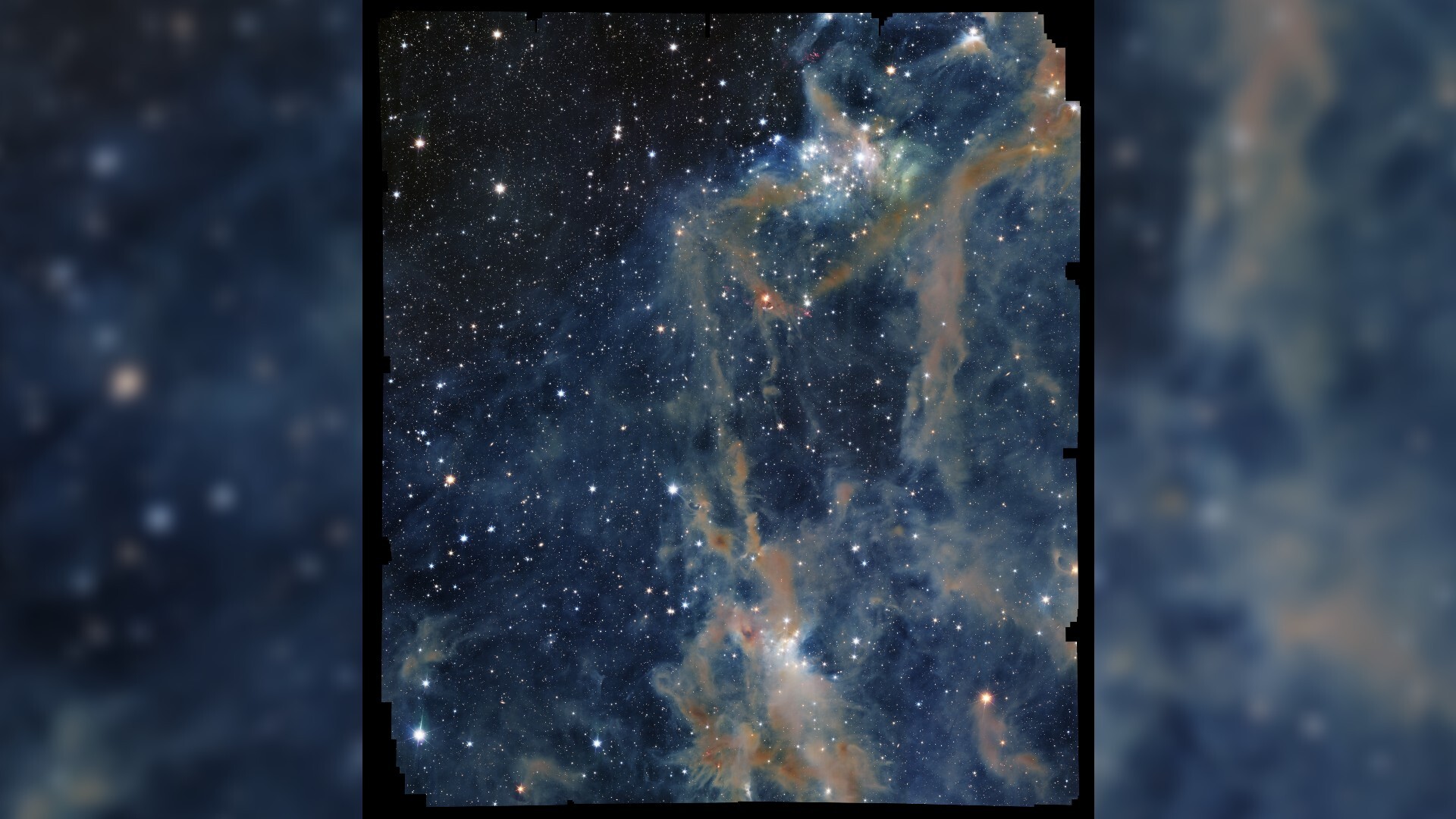Now Reading: Close-in Compact Super-Earth Systems Emerging From Resonant Chains: Slow Destabilization By Unseen Remnants Of Formation
-
01
Close-in Compact Super-Earth Systems Emerging From Resonant Chains: Slow Destabilization By Unseen Remnants Of Formation
Close-in Compact Super-Earth Systems Emerging From Resonant Chains: Slow Destabilization By Unseen Remnants Of Formation


An example of a system from the 20flat suite that experienced a post-disk instability. Left: evolution of the orbital elements and masses over time. Disk dissipation is marked by a vertical line at 5.1 Myr. The horizontal dashed line in the top left panel marks the planet trap at 0.1 au representing the disk inner edge. Black Xs mark when planets were removed from the simulation after a collision and merger. This system clearly has distinct outer and inner chains separated by a period ratio gap of 3.45. Right: mean motion resonant angles of adjacent pairs of planets in the system from out to in, with resonances determined from the state of the system at the time of disk removal. The y-axis in each panel ranges from 0 to 2π. The x-axis is scaled linearly. All pairs except the planets across the gap are in a librating resonant state at the time of disk dissipation, but the libration amplitudes of the outer chain increase over a timescale of ∼ 100 Myr, eventually entering circulation and triggering an instability. It appears that this perturbation was passed to the inner chain, making it unstable. — astro-ph.EP
Planet formation simulations consistently predict compact systems of numerous small planets in chains of mean motion resonances formed by planet-disk interaction, but transiting planet surveys have found most systems to be non-resonant and somewhat dynamically excited.
A scenario in which nearly all of the primordial resonant chains undergo dynamical instabilities and collisions has previously been found to closely match many features of the observed planet sample. However, existing models have not been tested against new observations that show a steep decline in the resonant fraction as a function of stellar age on a timescale of ~100 Myr.
We construct a simplified model incorporating Type I migration, growth from embryos, and N-body integrations continued to 500 Myr and use it to generate a synthetic planet population. Nearly all systems exit the disk phase in a resonant configuration but begin slowly diffusing away from the center of the resonance. Dynamical instabilities can arise on timescales of tens or hundreds of Myr, especially when systems formed in disks with a convergent migration trap. In this case, a secondary chain of smaller planets that remained at their birth location eventually breaks, destabilizing the inner resonant chain.
We also show that the instability statistics are well modeled by a Weibull distribution, and use this to extrapolate our population to Gyr ages. The close match of our modeled systems to the observed population implies that the high resonance fraction predicted by this class of models is in fact consistent with the data, and the previously-reported overabundance of resonant systems was a consequence of comparing simulations of early evolution to mature Gyr-old systems.
This result also suggests that instabilities triggered by disk dissipation or other very early mechanisms are unlikely to be consistent with observed young systems.
Max Goldberg, Antoine C. Petit
Comments: Submitted to A&A
Subjects: Earth and Planetary Astrophysics (astro-ph.EP)
Cite as: arXiv:2511.11329 [astro-ph.EP] (or arXiv:2511.11329v1 [astro-ph.EP] for this version)
https://doi.org/10.48550/arXiv.2511.11329
Focus to learn more
Submission history
From: Max Goldberg
[v1] Fri, 14 Nov 2025 14:03:26 UTC (3,459 KB)
https://arxiv.org/abs/2511.11329
Astrobiology,
Stay Informed With the Latest & Most Important News
Previous Post
Next Post
Previous Post
Next Post
-
 012024 in Review: Highlights from NASA in Silicon Valley
012024 in Review: Highlights from NASA in Silicon Valley -
 02Panasonic Leica Summilux DG 15mm f/1.7 ASPH review
02Panasonic Leica Summilux DG 15mm f/1.7 ASPH review -
 03How New NASA, India Earth Satellite NISAR Will See Earth
03How New NASA, India Earth Satellite NISAR Will See Earth -
 04From Polymerization-Enabled Folding and Assembly to Chemical Evolution: Key Processes for Emergence of Functional Polymers in the Origin of Life
04From Polymerization-Enabled Folding and Assembly to Chemical Evolution: Key Processes for Emergence of Functional Polymers in the Origin of Life -
 05And Thus Begins A New Year For Life On Earth
05And Thus Begins A New Year For Life On Earth -
 06Astronomy Activation Ambassadors: A New Era
06Astronomy Activation Ambassadors: A New Era -
07SpaceX launch surge helps set new global launch record in 2024





















